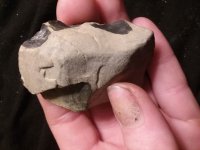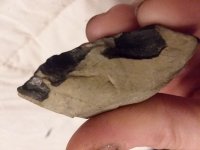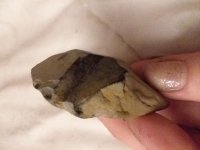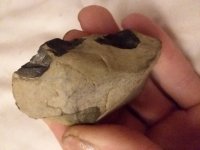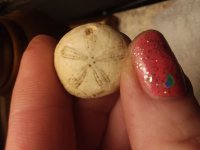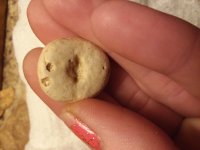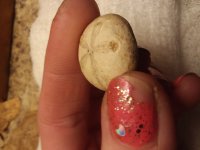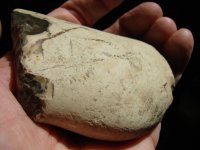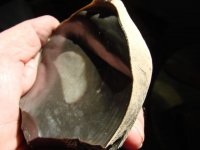Navigation
Install the app
How to install the app on iOS
Follow along with the video below to see how to install our site as a web app on your home screen.
Note: This feature may not be available in some browsers.
More options
You are using an out of date browser. It may not display this or other websites correctly.
You should upgrade or use an alternative browser.
You should upgrade or use an alternative browser.
✅ SOLVED best guess... sanding block?
- Thread starter mill-Z
- Start date
invent4hir
Bronze Member
- Aug 1, 2017
- 1,676
- 2,537
- 🏆 Honorable Mentions:
- 2
- Detector(s) used
- Whites V3i & DFX
- Primary Interest:
- All Treasure Hunting
Hmm, not sure of the purpose, but the black areas look like flint while the whitish areas look like core (I think). However, that may not jive w/ it being surprisingly soft. Which part was soft: the black, whitish or all?
If it turns out to be flint/core, then maybe someone was beginning to work on it, but didn't get a chance to finish. Was that found in the area of "confetti"?
If it turns out to be flint/core, then maybe someone was beginning to work on it, but didn't get a chance to finish. Was that found in the area of "confetti"?
Last edited:
Upvote
0
flinthunter
Hero Member
- Jan 3, 2011
- 899
- 1,074
- Detector(s) used
- E-Trac, V3i, DFX
- Primary Interest:
- All Treasure Hunting
It looks like a possible small chert nodule. The idea that Native Americans made tools with finger placements is mostly a myth. You don't tell us where it was found, so maybe a creek find. Tumbling against other stones will chip the edges of chert stone.
Upvote
0
Kray Gelder
Gold Member
- Feb 24, 2017
- 7,013
- 12,578
- Detector(s) used
- Fisher F75
- Primary Interest:
- Metal Detecting
I'm thinking it's a natural stone. But in the first pic I DO see the left side of Chairman Mao's face and bald pate.
Upvote
0
- Nov 3, 2018
- 2,812
- 5,992
- Detector(s) used
- O.G. XP DEUS
- Primary Interest:
- All Treasure Hunting
That is a type of sea urchin fossil I think...
Upvote
0
Red-Coat
Gold Member
It's not a fake (if you're referring to the second item). It's very obviously a sea urchin fossil. This is not the same species as the OP's, but the 'needle holes' are a normal anatomical feature of the test (the shell portion). They're the podial pores of the petalloid ambulacrum.
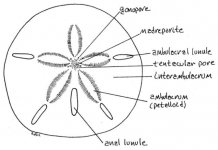
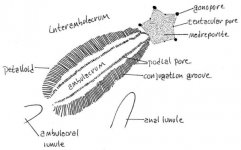
The first item is just a piece of heavily weathered rock with a cortex that has seen significant hydration. That will also affect the hardness of the interior and rocks like rhyolites are particularly susceptible to this (although I don't know if it occurs in the area where you found it). Difficult to say if it has been worked or chipped by mother nature.


The first item is just a piece of heavily weathered rock with a cortex that has seen significant hydration. That will also affect the hardness of the interior and rocks like rhyolites are particularly susceptible to this (although I don't know if it occurs in the area where you found it). Difficult to say if it has been worked or chipped by mother nature.
Last edited:
Upvote
0
- Thread starter
- #10
It's not a fake (if you're referring to the second item). It's very obviously a sea urchin fossil. This is not the same species as the OP's, but the 'needle holes' are a normal anatomical feature of the test (the shell portion). They're the podial pores of the petalloid ambulacrum.
View attachment 1938842 View attachment 1938844
The first item is just a piece of heavily weathered rock with a cortex that has seen significant hydration. That will also affect the hardness of the interior and rocks like rhyolites are particularly susceptible to this (although I don't know if it occurs in the area where you found it). Difficult to say if it has been worked or chipped by mother nature.
Thank you... Solved ��
Upvote
0
Top Member Reactions
-
 1899
1899 -
 1057
1057 -
 1005
1005 -
 981
981 -
 865
865 -
 840
840 -
 789
789 -
 744
744 -
 698
698 -
 584
584 -
 366
366 -
 364
364 -
 358
358 -
 345
345 -
 343
343 -
 342
342 -
E
329
-
 312
312 -
 308
308 -
 282
282
Users who are viewing this thread
Total: 2 (members: 0, guests: 2)
